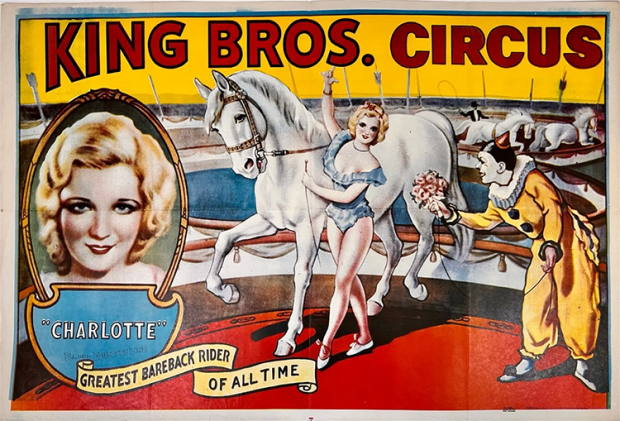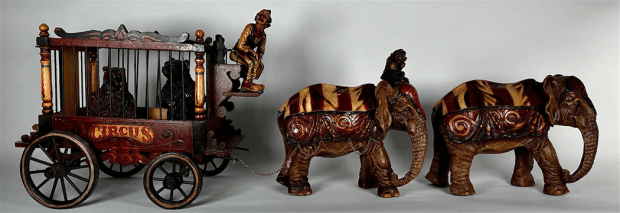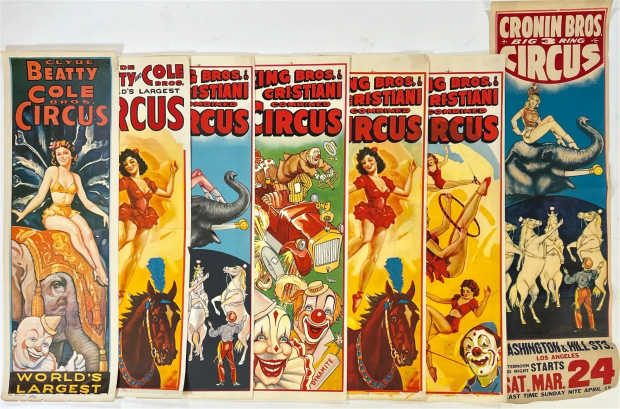#Step #Freedom #Auction #Companys #Big #Unique #Collection #Circus #Collectibles
The circus. Two words that are guaranteed to send any child (including the child within most adults) into a paroxysm of joy. When I was young, yearly trips to Ringling Brothers Barnum and Bailey Circus (The Greatest Show on Earth) were a family tradition. An active child, I rarely cared to sit still for more than five minutes. But the circus captivated me like nothing else. For ninety whole minutes, I was motionless, swept away into a world of wonder under the colorful canvas of the big top. My father, ever the collector of tchotchkes and trinkets, made sure that his children left with something to add to their circus souvenir collections. Those are some of my happiest childhood memories.
The circus, with its acrobats, clowns, and exotic animals, has been a source of fascination and entertainment for people of all ages, dating back to ancient Rome. Today, vintage and antique circus collectibles offer a distinctive and enchanting journey into the past, preserving the magic and nostalgia of this iconic form of entertainment.

Freedom Auction Co./Live Auctioneers
As a proverbial member of P. T. Barnum’s “children of all ages” generation, I would love nothing better than to be transported back to the beguiling magic Ringling Bros. offered. While those days are in the past, the colorful and appealing memorabilia produced by the circuses of the world is still available to those of us who long for that simpler time.

Freedom Auction Co./LiveAuctioneers
Freedom Auction Company’s “The Big One,” a rare collection of circus artifacts, will be offered live on Sunday, Sept. 3, with bidding taking place through LiveAuctioneers. It will be presented from the winter home of the Ringling Bros. Barnum & Bailey Circus, Sarasota, Florida.
Circus collectibles include a broad range of memorabilia that preserves the soul and fascination of this extraordinary world. These treasures, which range from programs and posters to art, books, souvenirs, costumes, and props, offer a concrete connection to the splendor of the circus’s heyday.
Whether you’re a seasoned collector or a newcomer to the world of circus collectibles, these keepsakes have the power to spark your imagination, evoking a sense of nostalgia for the good old days when the circus was a spectacular extravaganza that brought joy and awe to audiences around the world.

Freedom Auction Co./LiveAuctioneers
So, step right up and embark on a journey through the enchanting world of circus collectibles, where the spirit of the big top lives on in all its vibrant glory. Featuring more than 425 lots, this sale includes nearly every historical aspect of circus life. Online bids are being accepted now. Live bidding begins Sunday, Sept. 3., through LiveAuctioneers.
You may also like:
